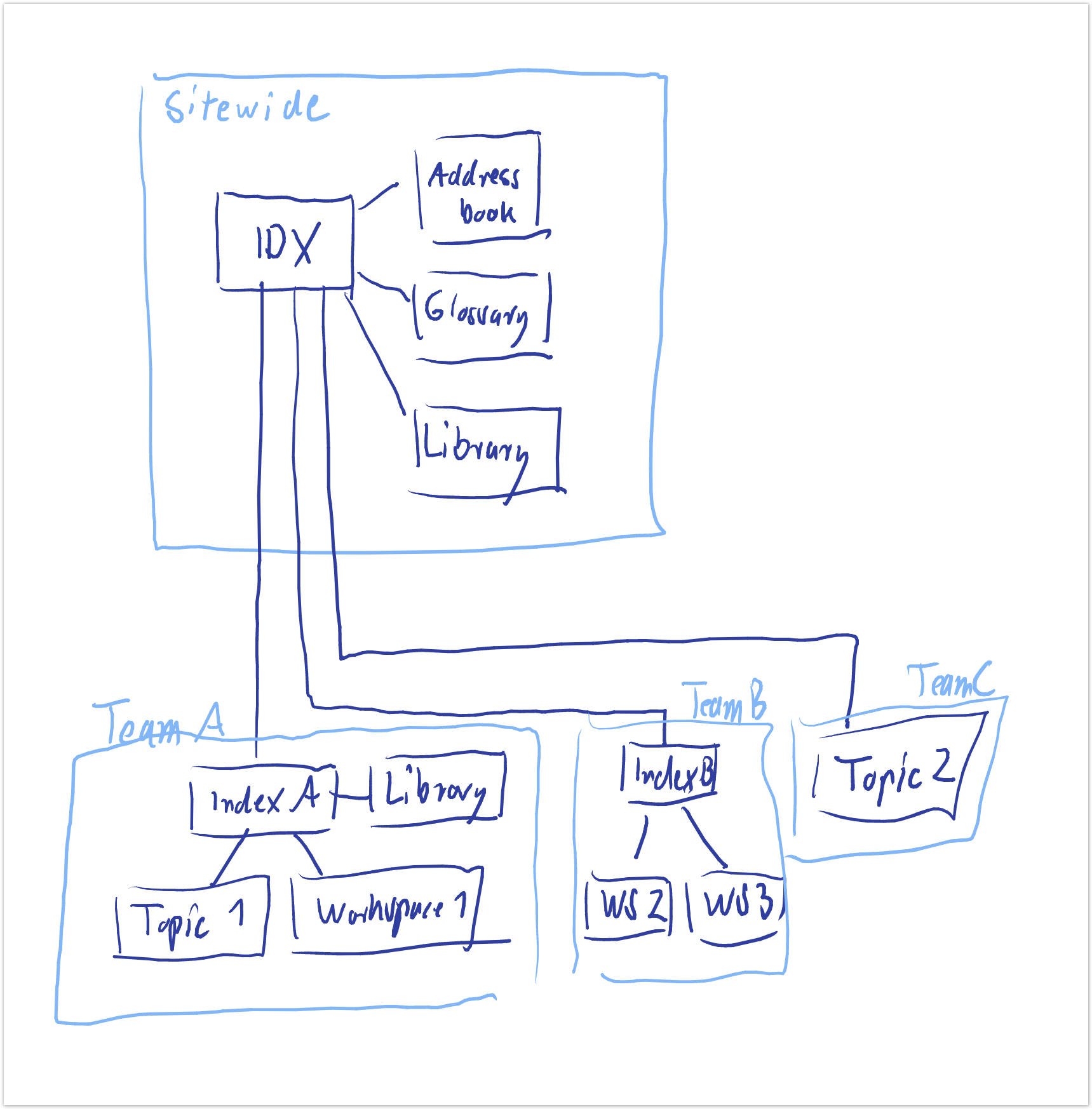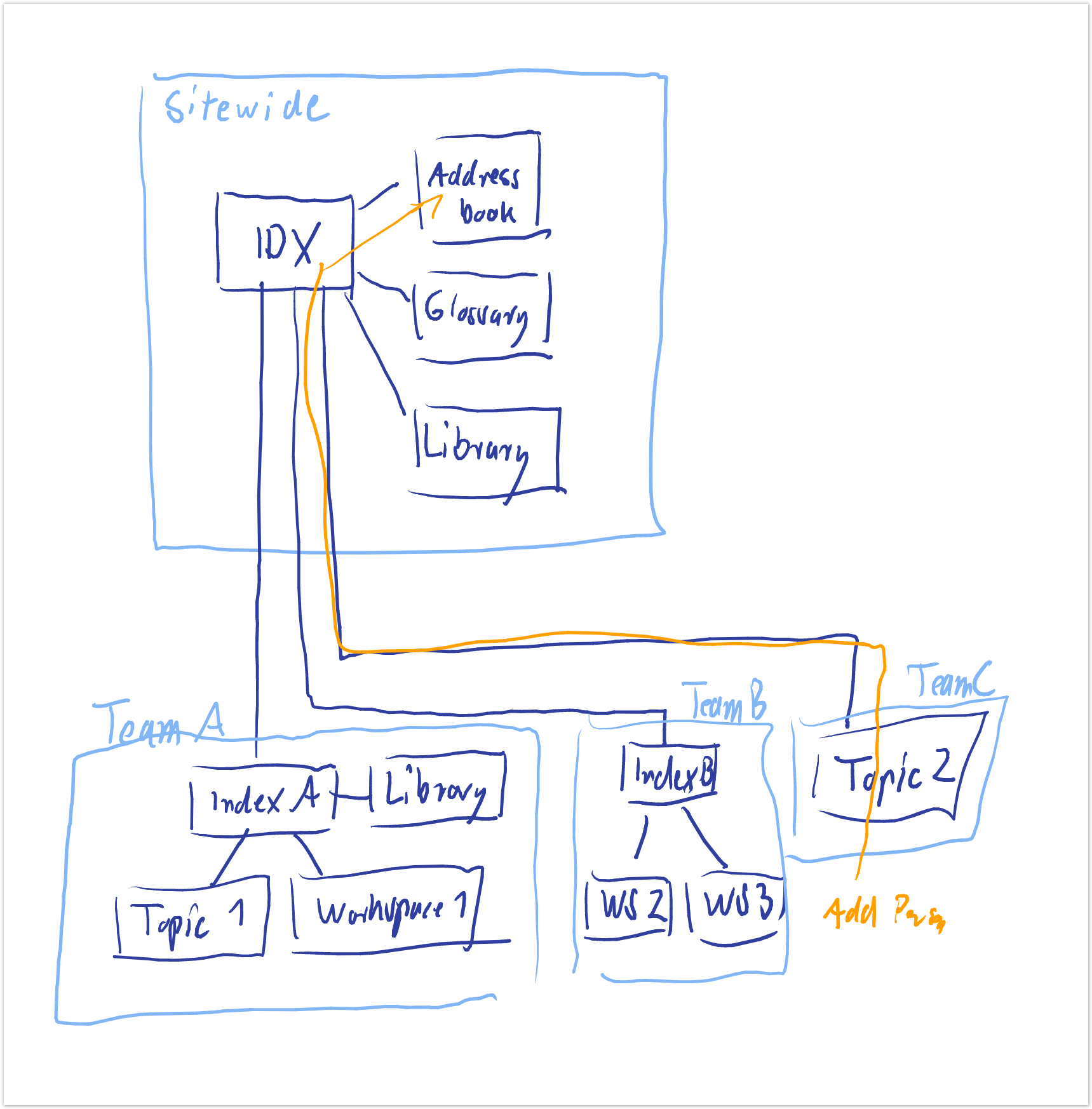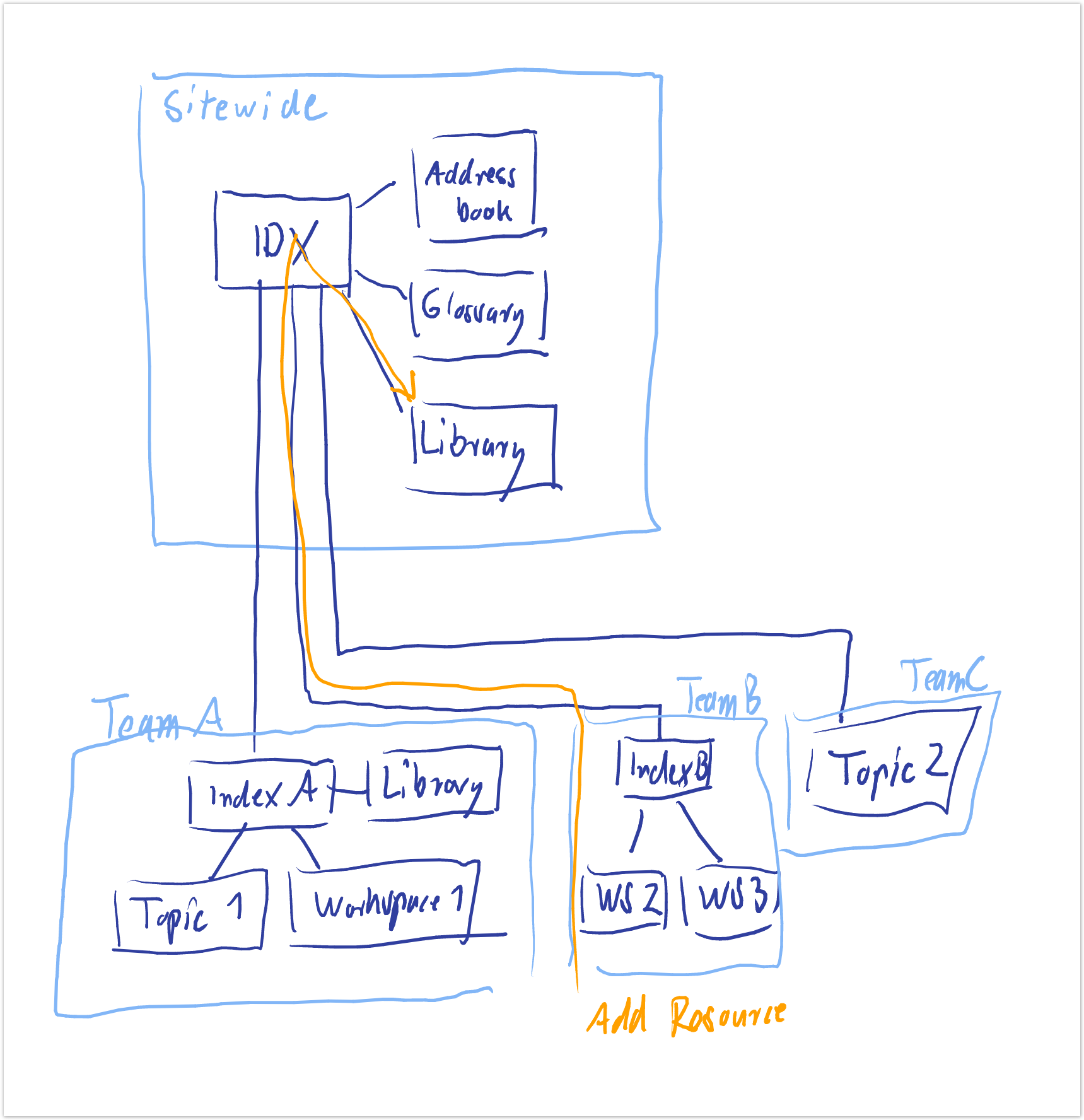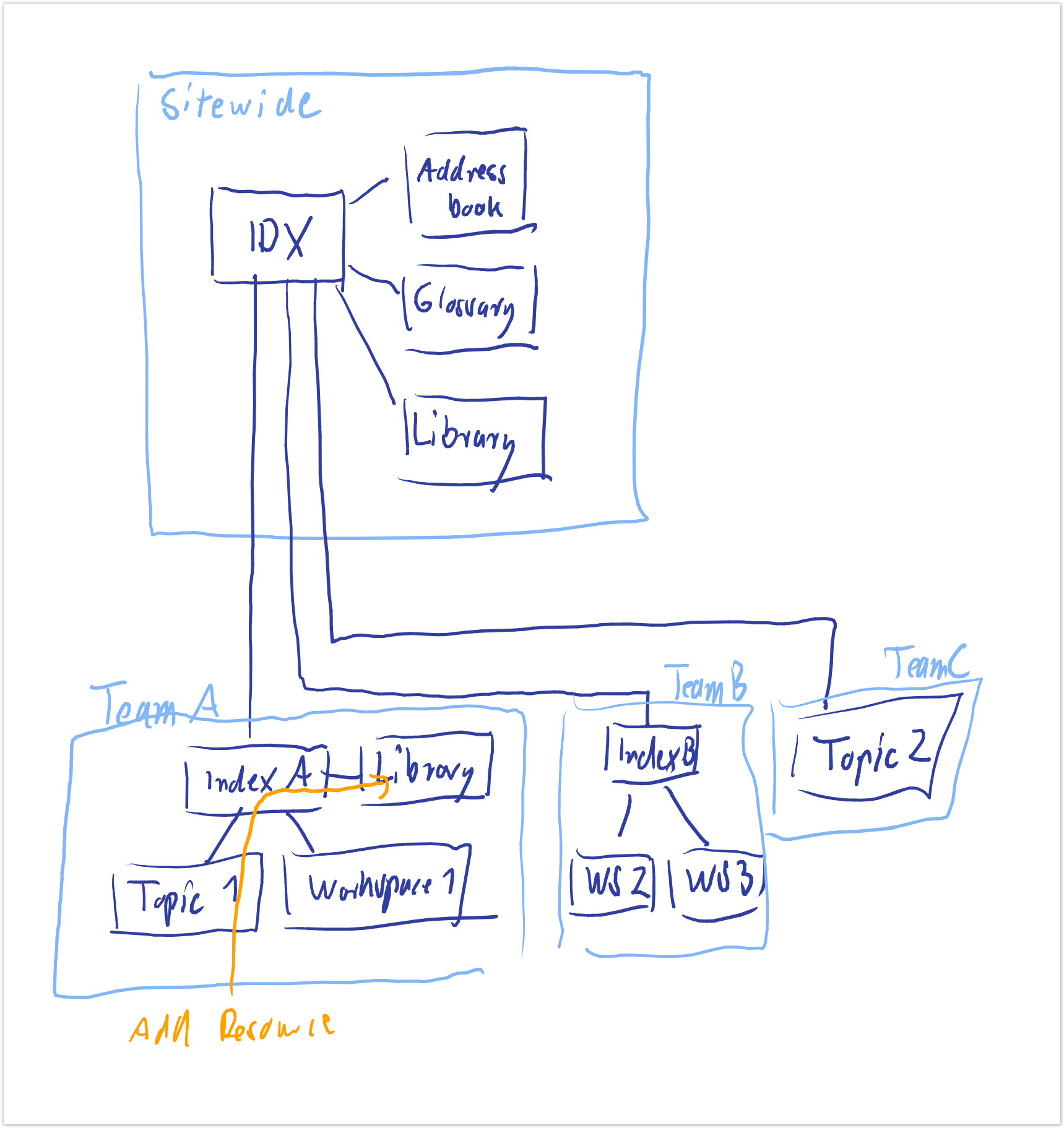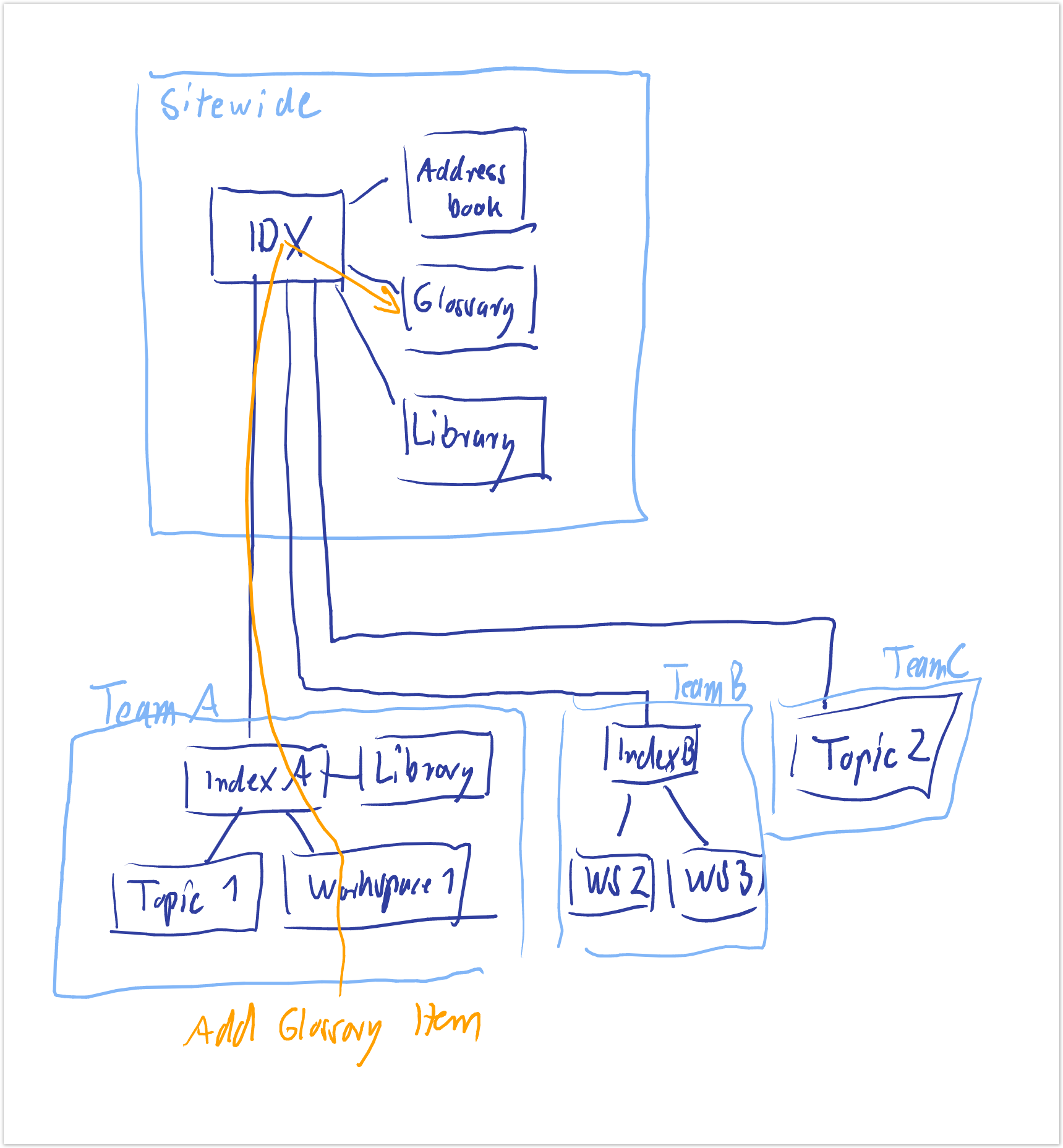...
| Section | |||||||||||||||||
|---|---|---|---|---|---|---|---|---|---|---|---|---|---|---|---|---|---|
| |||||||||||||||||
These single space use cases are typically not very common, if the organization allows to share configuration and information. In these cases, no space is an island! The projectdoc Toolbox allows configuration on space level using space properties. The configuration of space properties can be delegated to another space – a delegate space. Multiple spaces may share the same delegate space. In fact the projectdoc Toolbox assumes such a default space to have the space key
Sharing configuration is one aspect of a delegate space. The other aspect is the provision of homepages for doctypes. Index spaces define categorizing document types like tags, categories, subjects, and types, including topic type and tag type. These categories help readers to navigate a site. This categories are often shared between spaces. Usually there are some categories that are used in every space.
Since index spaces have typically sitewide access. For a public facing website this information is by default open to anonymous users. You may restrict the access to particular pages, but the users with least privileges have access to the homepage of the space and therefore to the configuration of this space. To hide sensitive information or information that is not relevant to every space visitor, the information architect may decide to store information with higher access levels in separated spaces. These spaces are called attachment spaces since they are attached to another space. In many cases this central space for attachment spaces is an index space. Attachment spaces are responsible to store information of a given kind. The library stores resources. The address book stores persons and stakeholders.
To attach a space to an index space, the space key is listed by the delegate-space Delegate Space property.
|
...
| Section | ||||
|---|---|---|---|---|
| ||||
Examples for attachment spaces are address books, glossaries, and libraries. In case you have the use case to provide this information for all your spaces, your sidewide sitewide spaces will have a structure similar to the following:
Assume that the three attachment spaces already exist. To attach these spaces, the configuration for the index space has these lines. The search space will find documents in all spaces the current user has access to (
No matter which page in a space of this configuration a user is visiting, when creating a new document, the send-to-homepage function of the page blueprint wizard will find the correct location for this new document. |
...
| Section | |||||||
|---|---|---|---|---|---|---|---|
| |||||||
In case a team needs a couple of spaces to meet their collaboration needs, the basic structure of index space and attachment spaces is also a valid solution. A couple of spaces may use a shared configuration or also require specific attachment spaces. These spaces form a space group. Topic spaces or workspaces with a specific task, such as service management, project management, or risk management, may also be registered as delegate spaces to the space group's index space. Again, the information architect needs to make sure that there is at most one dedicated homepage for a specific doctype. Instead of an index space with homespaces for various doctypes, a configuration space may be more handy. Required doctype homepages may be added later individually using the homepage blueprint wizard.
Space groups may share the same space label. In this case the search space can be configured to automatically include all spaces of this group in the search space. Every new workspace, tagged with the space label, will be automatically part of the search index of all spaces in this group.
|
| Section | ||
|---|---|---|
| ||
|
| Section | ||
|---|---|---|
| ||
The reason to build a hierarchy of spaces is to reuse configurations (in form of space properties), categorization, or information. Configuration and categorization is provided by index spaces, information by attachment spaces. Based on the index space and attachment spaces pattern, not only the sidewide sitewide spaces can be defined, but also spaces groups. A space group typically uses the sidewide sitewide configuration, but also adds configuration and homepages required by its use case. |
...



